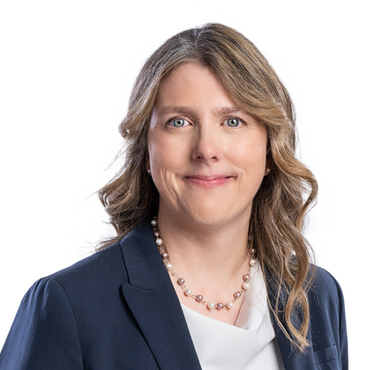Work Christmas parties: preventing incidents while keeping the atmosphere festive
With Christmas festivities just around the corner, employers must strike a balance between festive atmosphere, team spirit and legal obligations, particulary in terms of risk prevention. Although employers have always had responsibilities in relation to Christmas parties,1 the obligations regarding psychosocial risk prevention, introduced in October 2025, imposes new requirements.2 These obligations require that employers pay special attention to the psychological health of employees and specific measures to prevent psychosocial risks during company events, such as Christmas parties. But responsibilities do not fall on employers alone, employees also have a role to play during Christmas parties. To ensure that festive gatherings between colleagues are a success, everyone must do their part. 1. Employer’s obligations 1.1 Work accidents Although a Christmas party may take place outside what is considered regular working hours, an accident occurring during such an event may still be deemed to have occurred “in the course of work”, within the meaning of the Act respecting workplace accidents and occupational diseases.3 Because this concept is not defined in the law, case law establishes certain criteria to determine whether an activity in which a worker engaged at the time of the accident is closely related to their work. These criteria include: Where the incident occurred; the time of the incident; the remuneration for the activity in which the worker was engaged at the time of the incident the existence and degree of authority or subordination of the employer if the incident does not occur on the premises or during working hours; the purpose of the activity performed at the time of the incident, whether incidental, ancillary or optional to the employee’s working conditions; the nature of the connection or relative usefulness of the employee’s activity relative to the performance of their duties.4 None of these criteria is decisive on its own. They must be considered as a whole, taking the specific facts of each case into account. As an example of how broad the scope of this principle is, the Administrative Labour Tribunal (“ALT”) recently found that a worker who had injured herself while dancing during an activity organized by the employer’s social committee had suffered an accident “in the course of work”.5 The fact that the employer had allocated a budget for the event and granted time off to encourage employee participation made it possible to establish a link of usefulness and relevance to work.6 Conversely, in another decision, a worker who was running a stand serving hot drinks at an event held for city residents participated in a game called “The Christmas Tree Toss” with volunteers and employees after closing her stand.7 While performing her throw, she suffered an injury to ther right knee. After reviewing the aforementioned criteria, the ALT found that the accident had occurred as part of the worker's private life and not “in the course of work.” The gathering and participation in the event were not part of professional duties, and the event was intended for city residents. All attendees had left the premises, with only employees and volunteers left.8 1.2 Harassment and the importance of following procedures The Act respecting labour standards requires employers to take reasonable measures to prevent psychological and sexual harassment.9 In particular, all employers must develop a harassment prevention and management policy and make it available to their employees. Since September 2024, such policies must include recommendations on appropriate behaviour during work-related social activities, such as Christmas parties.10 More broadly, according to the Act respecting occupational health and safety, in Quebec, employers must take measures to prevent situations of physical or psychological violence, including spousal, family or sexual violence.11 Employers must strictly adhere to their internal procedures if this type of incident occurs. A grievance arbitrator made this point in a case where a plaintiff was dismissed from his employment after having refused to cooperate in an investigation regarding allegations of participation in events of a sexual nature and drug use after a Christmas party having been held by the plaintiff’s employer.12 Although the alleged acts took place in a hotel outside working hours and in a private setting, they had a negative impact on the work environment. The employer had been informed of persistent rumours that were detrimental to the proper functioning of the business. In this case, to warrant the holding of an internal investigation, the employer had been able to establish a sufficient link between the activities, which first appeared to have taken place in the employee’s private life, and its business. However, the fact that the employer had failed to obtain the plaintiff's version of events before taking disciplinary action, as required by its own procedure, affected the outcome. As a result, the contestation of the dismissal was allowed.13 To avoid this type of situation, employers must make it a point to follow their own internal complaint handling procedure. 1.3 Disciplinary offences Since office Christmas parties are connected to the workplace, employees are generally required to fulfill their obligations. Misconduct on their part could warrant disciplinary measures. For example, if an employee engages in harassment or insubordination, in particular while under the influence of alcohol, which can be a catalyst for problematic behaviour, their employer will be entitled to impose disciplinary measures. However, an employer cannot impose two penalties on an employee who committed a disciplinary offence. A grievance arbitrator has ruled that suspending an employee for three days for a sexually suggestive gesture made jokingly at a Christmas party, in addition to prohibiting the employee from attending subsequent Christmas parties for three years, constituted double punishment. The financial penalty linked to the suspension was deemed sufficient as a disciplinary measure for the alleged offence.14 2. Best practices for employers In order to minimize the risks associated with the Christmas holidays, employers could implement the following practices. To prepare for parties : Ensure that your harassment and alcohol and drug use policies are up to date, in accordance with applicable law. Prepare an incident-related risk analysis mechanism (and include psychosocial risks). Send employees a reminder before the event, pointing out that employer policies continue to apply and reminding them of expected behaviours and ways to get help or report problematic situations. Implement preventative measures regarding alcohol consumption. For example, employers should limit alcoholic consumption by providing coupons, offer a choice of non-alcoholic drinks, along with food, or close the bar at a specific time. Offer employees options at the event where alcohol will be consumed, such as taxi vouchers, ride-sharing services or accommodation. During the party : Employees comply with internal policies and respond immediately. Managers are present and able to respond quickly to inappropriate behaviour and document any incidents that occur. Preventive measures, such as closing the bar or distributing taxi vouchers, among others, are applied. After the party : Follow up with the organizing team to determine what went well and what did not, including any incidents that occurred, to apply corrective actions. Objectively assess all reports and initiate an impartial and confidential investigation if necessary, meeting with the parties involved to obtain each person’s version of the facts, in compliance with policies or rules arising form laws, collective agreements or contracts. Keep records of incidents that have occurred, as needed. Update policies and procedures in light of lessons learned. 3.Conclusion With Christmas parties just around the corner, it is worth remembering that for a party to be deemed successful by employers and employees alike, it is not only the festive atmosphere that counts, but also the effectiveness of the implemented preventive measures. Before holding your event, put the necessary risk prevention measures in place so that everyone can fully and safely take part in it. We invite you to read the following articles on these subjects: Lavery, “The Success of Employer-Organized Christmas Parties: It Is Everyone’s Business?” November 29, 2023, URL: The Success of Employer-Organized Christmas Parties: It Is Everyone’s Business?. Lavery, “The return of Christmas parties: What employers need to know,” December 9, 2022, URL: The return of Christmas parties: what employers need to know. We invite you to read the following article on this subject : "Occupational health and safety: Understanding employers’ new obligations", December 10, 2025, URL: Occupational health and safety: Understanding employers’ new obligations Act respecting industrial accidents and occupational diseases, CQLR, c. A-3.001, s. 2. Cannara Biothech (Valleyfield) inc. et Boulanger, 2025 QCTAT 1771, para. 9. Ibid, para. 1. Ibid, paras. 23–29. Murphy et Ville de Léry, 2022 QCTAT 5309, para. 1 Ibid, paras. 40–46. Act respecting labour standards , CQLR c. N-1.1, s. 81.19. Ibid., s. 81.19, para. 1, subpara. 3. Act respecting occupational health and safety, CQLR, c. S-2.1, section 51 (16). Syndicat des salariés(es) de l'agroalimentaire de Ste-Claire (CSD) et Kerry Canada inc. (Richard Guay) , 2022 QCTA 224, para. 1. Ibid, paras. 109–111. Teamsters Québec, section locale 1999 et Univar Canada ltée (Jean-Martin Gobeil), 2020 QCTA 344 paras. 77–80.






